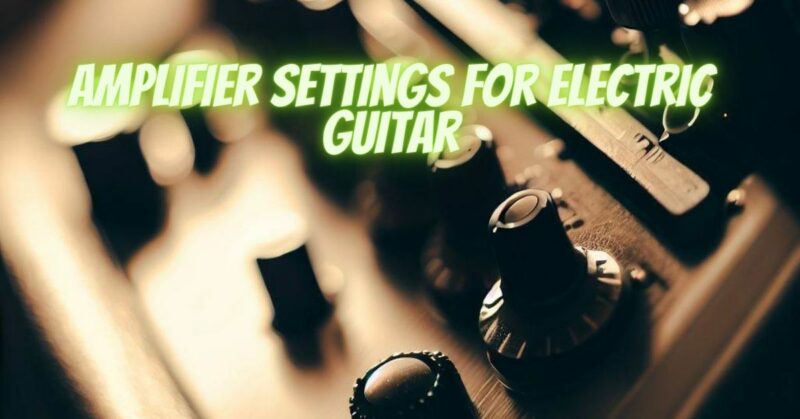An electric guitar amplifier is a powerful tool that can shape your guitar’s tone and deliver the sound you desire. Understanding how to set the amplifier’s controls correctly is essential to achieving the best sound for your playing style and musical preferences. In this article, we will guide you through the essential amplifier settings for electric guitar, helping you unlock the full potential of your instrument and amplifier combination.
- Gain (or Drive)
The gain control on your amplifier determines the level of distortion or overdrive in your sound. Lower gain settings produce a cleaner sound, ideal for genres like jazz, blues, and some rock styles. Higher gain settings introduce distortion, giving your sound a gritty and driven quality, suitable for heavier rock, metal, and hard rock genres. Experiment with the gain control to find the level of distortion that complements your playing style.
- Volume
The volume control regulates the overall output level of the amplifier. Adjust the volume to your desired level, considering the room size, playing environment, and the overall mix of your band (if playing with others). Be mindful of your surroundings, especially in shared living spaces, and adjust the volume accordingly.
- Equalization (EQ)
The EQ controls on your amplifier allow you to shape the tone of your guitar sound. Common EQ controls include:
- Bass: Adjusts the low frequencies. Increasing the bass provides a fuller and deeper sound, while reducing it results in a tighter and more defined tone.
- Midrange: Controls the mid frequencies. Boosting the midrange adds warmth and presence to your sound, while cutting it can create a scooped or more aggressive tone.
- Treble: Manages the high frequencies. Raising the treble adds brightness and clarity to your sound, while reducing it can produce a softer and mellower tone.
Experiment with the EQ controls to find the balance that suits your playing style and the sound you want to achieve.
- Presence (if available)
The presence control, when available on your amplifier, affects the high-frequency definition and can add sparkle and shimmer to your sound. Increasing the presence can enhance clarity and cut through the mix, while reducing it may produce a smoother and warmer tone.
- Reverb (if available)
Reverb is an effect that simulates the natural reflections of sound in a room, adding space and depth to your sound. Experiment with the reverb control to find the right amount of ambience that fits your playing style and the character of your music.
- Master Volume
Some amplifiers have a separate master volume control, which adjusts the overall output level of the amplifier without affecting the gain. This allows you to achieve saturated overdrive tones at lower volumes, making it suitable for home practice or small gigs.
- Effects (if available)
Many modern amplifiers come with built-in effects, such as delay, chorus, and modulation effects. If your amplifier includes these features, experiment with the effects to enhance your sound creatively. Use effects sparingly to avoid overpowering your core guitar tone.
Optimizing your electric guitar sound begins with understanding how to set up your amplifier correctly. By adjusting the gain, volume, EQ, presence (if available), reverb (if available), and effects (if available), you can shape your tone to suit your musical preferences and playing style. Remember to experiment with different settings, and don’t be afraid to explore new sounds. Over time, you’ll develop a deeper understanding of your amplifier and its capabilities, allowing you to create a signature sound that reflects your unique musical identity.


